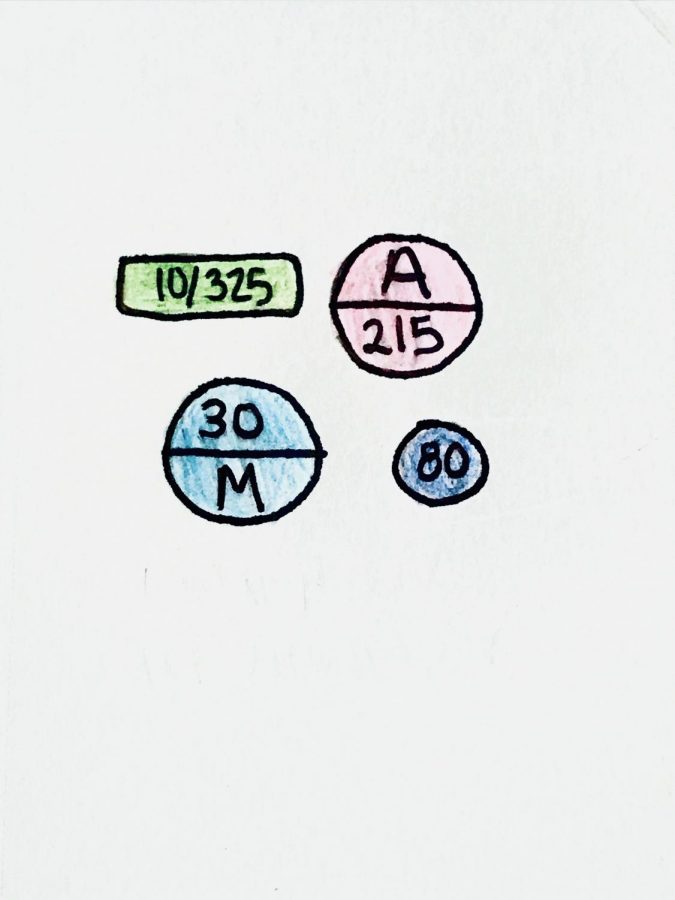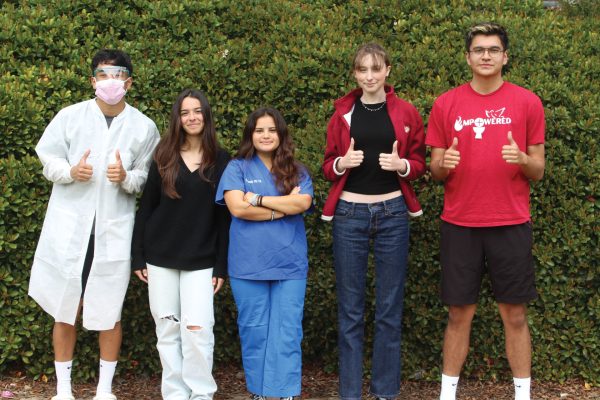Drug Overdoses in California Are Rising as Laced Drugs Are More Common
October 5, 2020
By Summer Ingalls
Staff Writer
As drug overdoses in California continue to rise, officials are finding that drug dealers are now lacing not only hard drugs like heroin and cocaine, but sometimes even more common party drugs, with an extremely deadly substance known as fentanyl, which has become much easier and less costly to produce.
According to preliminary data released by the Centers for Disease Control and Prevention, there were an estimated 6,518 drug overdose deaths across California last year. That’s up from 5,626 in 2018, an increase of 15.9 percent (cdc.gov).
Fentanyl is a synthetic opioid, according to Bay Area Addiction Research and Treatment (BAART). When used as instructed, it can be a treatment for chronic pain, especially for surgery recovery and with cancer patients (baartprograms.com).
While fentanyl and other synthetic opioids are used in prescription drugs, these substances are increasingly being illegally manufactured and distributed alongside or mixed with other illegal drugs like cocaine and heroin. It is often impossible to immediately tell if a powder or pill contains fentanyl, because it can’t be detected by scent, taste, or sight. Furthermore, dealers might not know what they are selling or how strong it is (baartprograms.com).
Like other opioids, fentanyl relieves pain and creates feelings of euphoria and relaxation, but when misused there are also harmful side effects, including dizziness, confusion, vomiting, loss of appetite, respiratory depression, and even death (baartprograms.com).
A UC High Student who chose to remain anonymous said, “I once was at a party and some of my friends and I decided to do Xanax. I had done this drug before, so I wasn’t nervous about taking it. We all took the pills and about 30 minutes into it we all knew something was wrong. We figured the pills we took were laced. We didn’t know at the time what they were laced with, but we then figured out it was fentanyl. All of us were throwing up, ripping off our clothes because we were overheating and having trouble breathing. We all fell asleep after consecutively throwing up all over the place. Luckily, we all woke up the next morning. If there was just even a little bit more fentanyl in those pills we all could have died. I have never touched any drugs since.”
According to BAART, fentanyl is an incredibly potent drug, being anywhere from 50 to 100 times stronger than heroin. Typically manufactured as a white powder, it can be mixed into other drugs such as heroin and cocaine, with extreme consequences. Users are at a high risk of overdose when fentanyl is mixed with any other illegal drugs (baartprograms.com). Additionally, according to The LA Times, fentanyl is increasingly showing up in non-opiates too, including methamphetamine, MDMA, and counterfeit prescription pills (latimes.com).
According to Live Stories Civic Analytics Platform, most street fentanyl is produced illegally as a powder, which can be swallowed, smoked, snorted or injected. “Fentanyl can kill you at first use. That’s why there’s incredible urgency,” said Dr. Kelly Pfeifer, who studies the opioid epidemic at the California Health Care Foundation (livestories.com).
Fentanyl-related deaths in California have been steadily increasing over the past several years, reports BAART. Potency, low cost, and availability are some factors in the increase of deaths and overdoses (baartprograms.com).
The issue is not exclusive to California. According to Safe Medicines, the problem has spread to 49 states, and many have suffered from overdoses and death of loved ones because the drugs they were taking were counterfeit (safemedicines.org).
When someone overdoses on fentanyl, they first become sleepy, and it is hard to wake them, according to the Center for Addiction and Mental Health. Their breathing becomes slow and shallow. They may snore, and they may pass out. The person’s body may become limp. Their face pale or clammy, and their pulse weak. For lighter skinned people, their lips and fingertips may turn blue or purple. For darker skinned people, the inside of the lips may become blue or purple (camh.ca).
As the death toll from the nation’s opioid crisis swells, California officials have launched an experiment: paying for a program in which drug users can test their drugs for fentanyl, according to the Los Angeles Times. The state has spent about 57,000 dollars on the tests so far, officials say. These test strips that detect the opioid are growing more popular not only in California but nationwide, with several overdose prevention programs across the country already using them (latimes.com).
The tests, which are manufactured by a Canadian company and cost one dollar each, function similarly to a pregnancy test. Users mix a little bit of a drug with water and then dip the strip in for several seconds. Five minutes later, they’ll see the result. One line on the strip means fentanyl is present. Two lines means it’s not (latimes.com).
But, experts warn that the tests are an imperfect solution. They haven’t been approved by federal regulators, and some experts have concerns about the accuracy of the results. Some public officials are reluctant to offer them (latimes.com).
Executive Director of Needle Exchange for Los Angeles Community Health Project Michael Marquesen pointed out that the tests were made for pharmaceutical grade fentanyl, so the kind available on the street might not be an exact match. He worries that users will ultimately begin ignoring the results if they always come back positive. Marquesen continued, “The tests have shown that 40 percent of the heroin in Hollywood contains fentanyl… The overdose rates in Hollywood are through the roof. They keep rising every month” (latimes.com).
Harm Reduction Manager at the Pacific Pride Foundation Ken Osepyan, who runs needle exchanges in Santa Barbara County, said that in order to avoid overdoses, he reminds users to start with just a little: “You can always do more, but you can’t do less” (latimes.com).
According to the Center for Addiction and Mental Health, it is a good idea to have a free naloxone kit around in order to counteract potential overdoses. Naloxone is a medication that can temporarily reverse the effects of an opioid overdose and allow time for medical help to arrive (camh.ca).
The Good Samaritan Drug Overdose Act protects drug users from being charged or convicted for drug possession if they call 911 to report an overdose, or if they are at the scene when emergency services arrive. This is true even for those on probation for possession. If someone is overdosing, people are instructed to call 911 right away (camh.ca).









